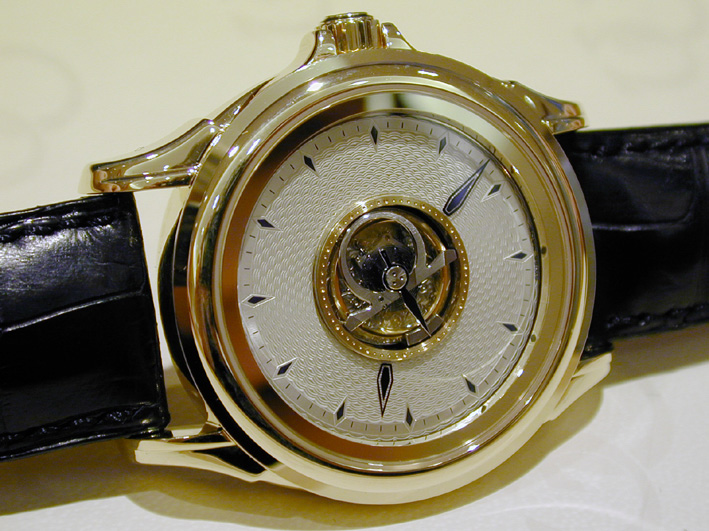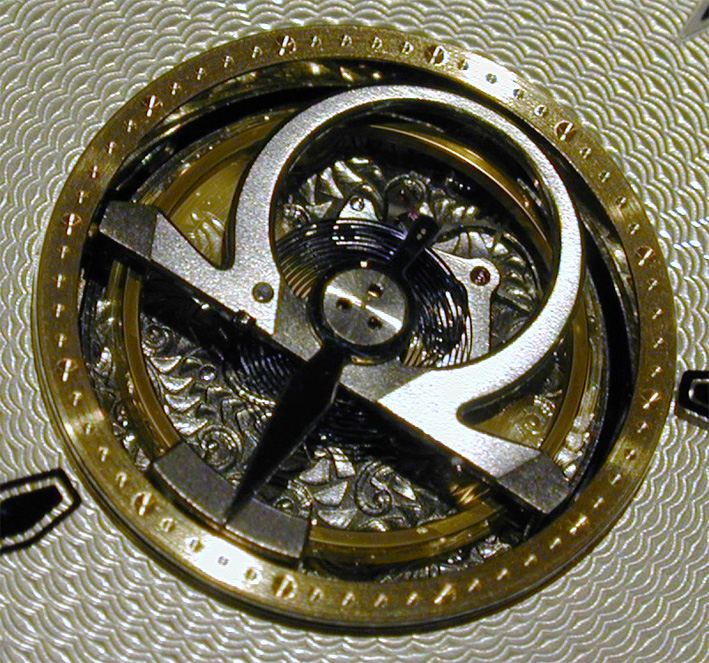
Although I'm far away from having the money left for such exciting pieces of 'Haute Horologie' I have to admit that I'm totally fascinated about them and of course I could not resist to get in touch with this particular outstanding timepiece after having seen it in the windows of the new OMEGA brand store in Zurich!
Most of us watch lovers will never be in the nice situation to spend 85.000 Swiss Francs on a single watch. Nonetheless I think all of us are still fascinated about timepieces that are technically and/or aesthetically outstanding. The OMEGA Tourbillon Central is doubtless one of these rare watches:
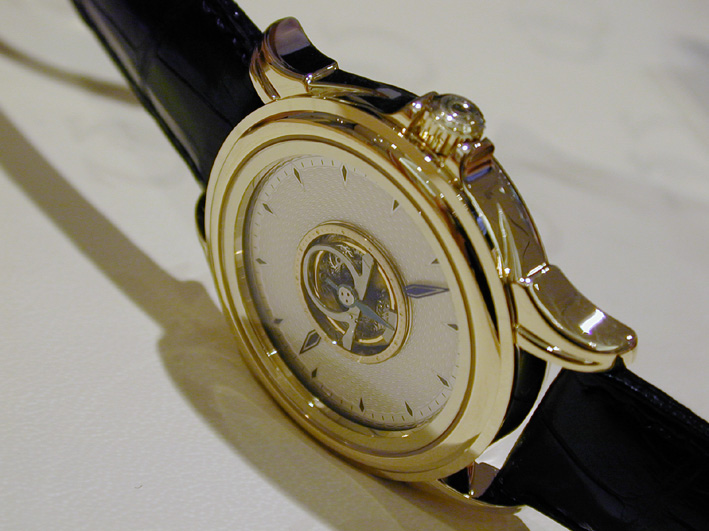
The Watch
The watch
has a solid 18k yellow, rose or white gold case which respresents a modern
interpretation of fine wristwatches of the 50ies. The execution is of
highest standart with much attention and perfection in the detail: Here
a side view (I want to draw your attention to the lugs!)
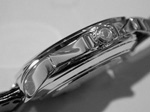
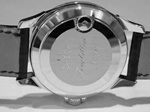
The Tourbillon Theory
The elimination
of the influence of the friction on the precision of a portable watch
(a watch that is not constantly in a distinct position like a clock, eg.
pocket and wrist watches) was a major stimulus for watchmakers throughout
the last centuries. The famous watchmaker Abram Louis Breguet invented
around the year 1800 a mechanism that could correct unpreciseness caused
by different amounts of friction in different positions of a watch: The
Tourbillon.
This mechanism - which looks so easy and logical but is in fact extremely
difficult to realize - bears escapement and balance wheel in a rotation
cage: The factor 'gravity' could to his preciseness-killing work for only
one complete rotation of the tourbillon cage (unsually 1 min, but there
are also tourbillon that rotate once each 4 min or 1 h, the fastest one
needs only 12 sec!) until it will be compensated.
The callenge of realizing a tourbillon is not the entire principle in
itself, but the functional position where it is placed in the clockwork:
Near by the escapemant, where there is not much power to drive a complex
mechanism. This is the reason why a tourbillon must be executed within
extremely minimal tolerances to be of light weight but precise. Additionally,
the speed of the revolution counts to the arduousness of this work: The
faster the revolution, the preciser the watch; but the faster, more power
it needs; the more power it needs, the lighter it has to be made...!
The masterpiece in the line of tourbillons is the 'Flying Tourbillon',
a tourbillon that is only unilaterally pivoted. Only a very handful of
watchmakers are able to master this complication. One of these is Paul
Gerber from Zurich, Switzerland, who also created, together with Volker
Vyskocil, the owner of the watch page Clock-Watch.de
(german version: Uhrentechnik.de),
an educating and entertaining Tourbillon Animation:
Omega's automatic Tourbillon Central Movement
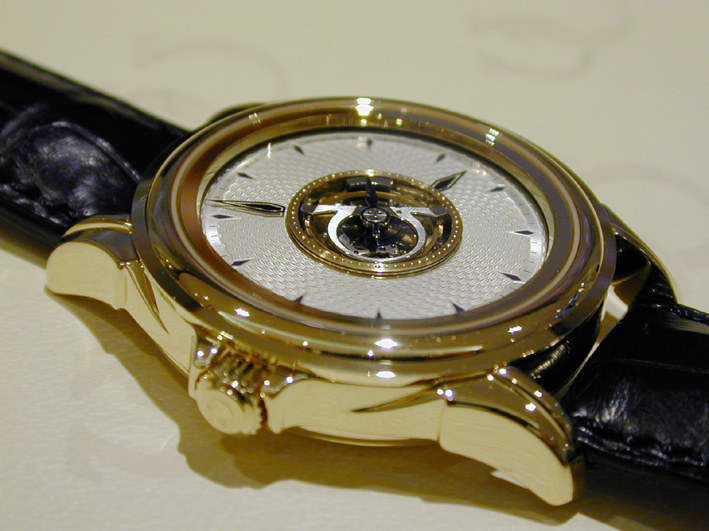
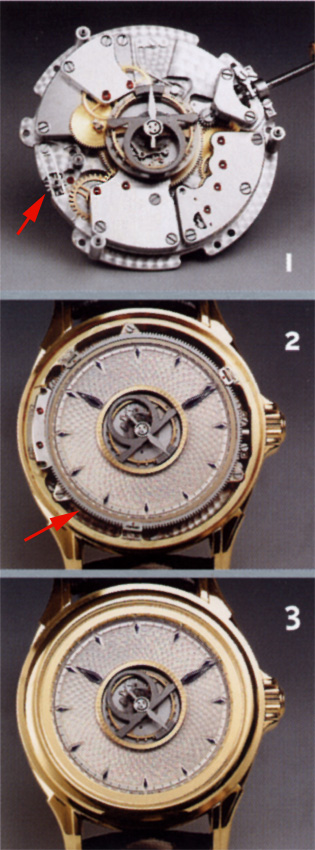
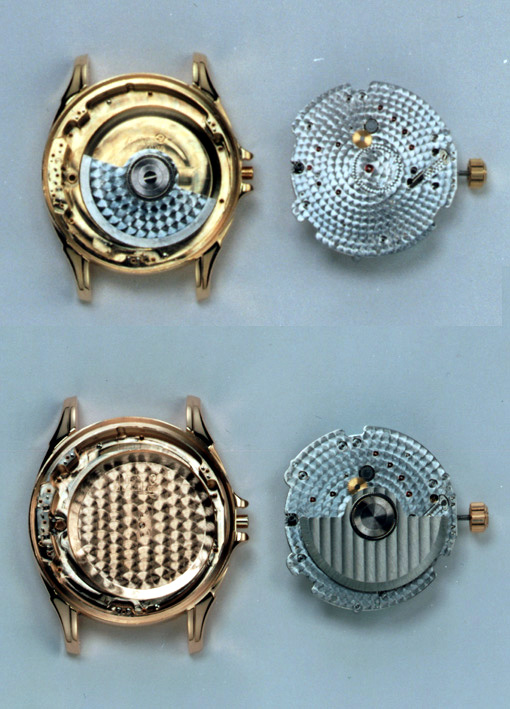
Credits: Special thanks to Mr. Marco Brun of Omega who gave me the opportunity for this review, to Volker Vyskocil who allowed me to set a link to his tourbillon animation, to Sandro Bösch of ZeitZone Zürich for entertaining and helpful discussions. A very special thank you to my girlfriend Isabelle for proof reading the manuscript!
Magnus Bosse © March 2001 Last update 10 December 2006
